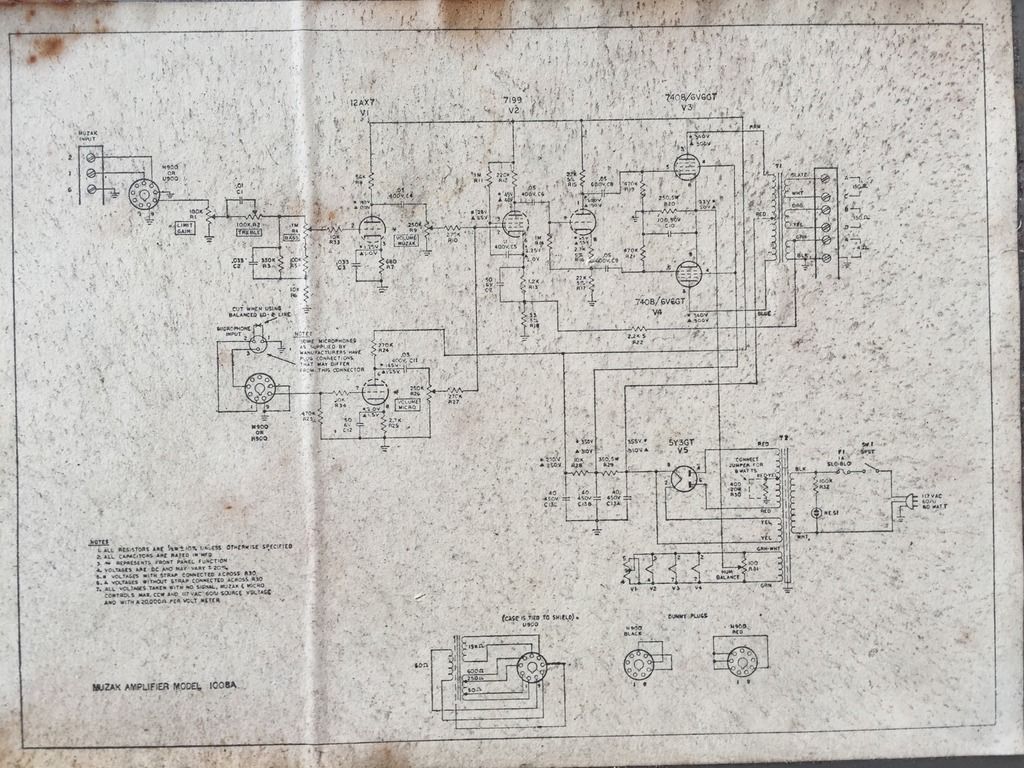I'm converting a Muzak PA amp, basically just redoing the power supply and adding a dual triode 12ax7 preamp and vol/tone controls ahead of the 7199 -> 6V6PP power amp. It's a cool looking PA - pics are here.
I haven't been able to figure out the purpose of the 400ohm 20-wall resistor is between the PT's center tap and ground? If it's too small to read, The schematic says "Connect Jumper for 8 Watts" next to a dotted line in parallel with the resistor. I've searched a number of forums and can't figure out what it's doing there.
Schematic is below. Thanks.
[IMG] [/IMG]
[/IMG]
I haven't been able to figure out the purpose of the 400ohm 20-wall resistor is between the PT's center tap and ground? If it's too small to read, The schematic says "Connect Jumper for 8 Watts" next to a dotted line in parallel with the resistor. I've searched a number of forums and can't figure out what it's doing there.
Schematic is below. Thanks.
[IMG]
 [/IMG]
[/IMG]


Comment